

Beehives
In general, bear damage to beehives has a relatively minor impact on the beekeeping industry overall. However, bears can cause significant damage to individual beeyards. Once a bear succeeds in obtaining honey and bee brood it is likely to return and may develop a habit of visiting regularly which can be hard to break. It is therefore important to prevent bear damage before it begins to be a problem. Several proven methods are available.
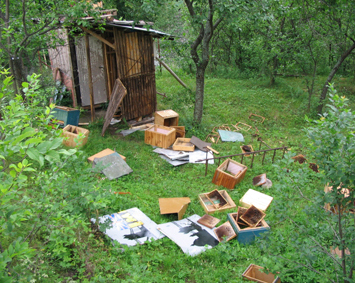
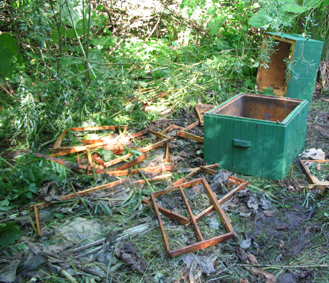
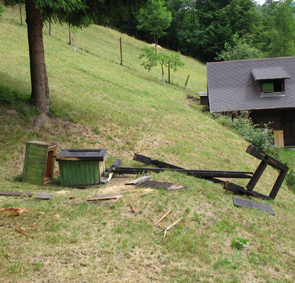 Photographs: P. Kostur
Photographs: P. Kostur
Location
Beehives should be located away from areas frequently used by bears, such as berry patches, heavily forested areas, riparian corridors, ravines, forested ridges and game trails. Bears prefer to stay where they have adequate cover. Placing beehives in the open, away from forest edges and other cover, may discourage bears from approaching. Research in the southwest USA found that placing beehives at least 100 metres away from forest edges and ravines reduced bear visitation by more than half.
Electric fences
As shown by their use to contain bears in zoos, adequate electric fencing can keep bears out. Key features of fence design are strand spacing, energizer type and grounding effectiveness. Ideally, there should be 4 or more wire strands no more than 30 cm apart. The bottom wire should be no more than 20 cm above the ground. The top wire does not need to be more than 1 to 1.5 metres high. Locate beehives at least 1 metre inside the fence. To protect the energizer and battery from theft or damage, place them inside the fence. Additional protection against theft can be provided by putting the energizer and battery inside a hive body modified to exclude bees, with active hives placed on top. More ...
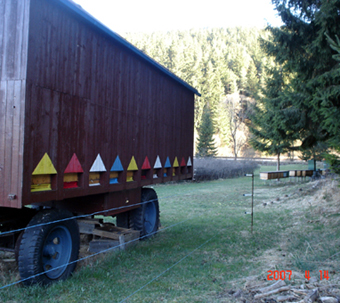
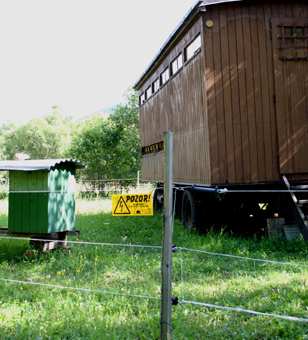
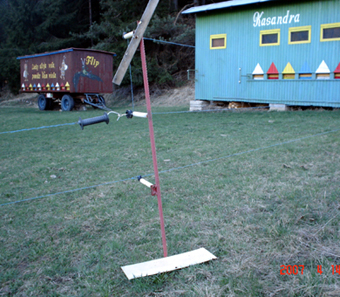
Elevated platforms
These are effective at eliminating bear damage to beehives but can be expensive to build, are relatively immobile and present practical difficulties when working with the colonies. Platforms can be wood or steel and should raise the colonies at least 2.5 metres above the ground. There should be an overhang around the edges of the platform, ideally more than 50 cm wide, to prevent bears climbing up.
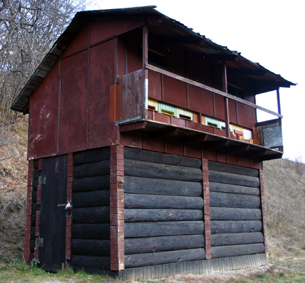

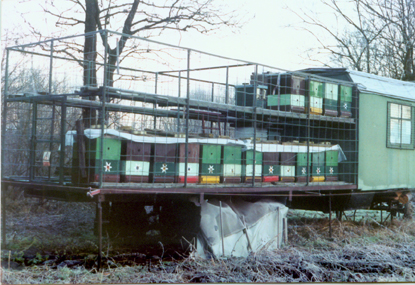
Shooting or capturing bears
When preventive methods fail, the bear may have to be removed. Bears have sometimes been relocated to areas where they are less likely to cause further damage. However, relocating bears is expensive and it is difficult to find suitable release sites. Relocated bears might create problems at their new locations or return to where they were captured. Another possibility is to keep nuisance bears in captivity, but zoos and sanctuaries have limited space. If capture and relocation is not a viable option, the bear may have to be destroyed.
More:
"Managing bear damage to beehives" by L.E. Meadows, W.F. Andelt and T.D.I. Beck


